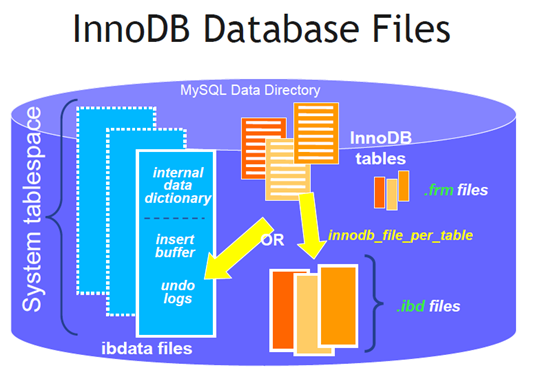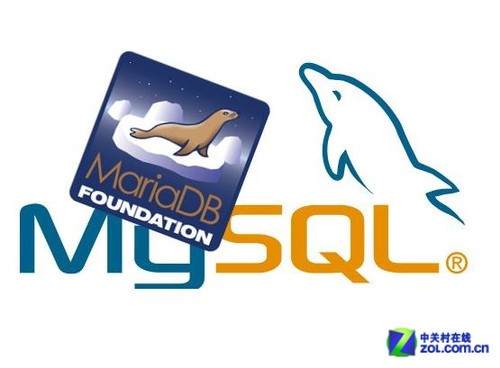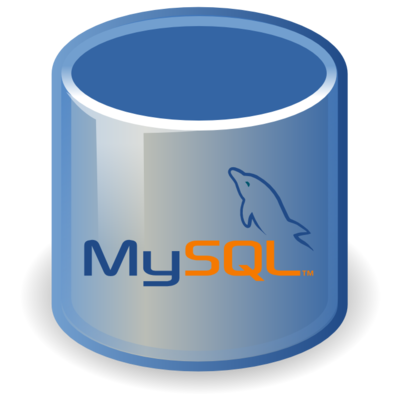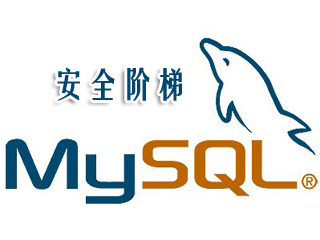How to use nnoDB? Summary of nnoDB instance usage
1. Architecture design 11. The master and slave servers can use different storage engines. InnoDB is used on the Master, taking advantage of advanced features such as transactions and row-level locks. MyISAM is used on the Slave, which has better read performance, saves memory, and is easy to back up. You can also use different data types respectively, such as varchar on the Master and char on the Slave. This not only saves space, but also makes use of the static table features of MyISAM. 2. In the M-S-Muti Slave solution, the relay slave can also use the BlackHole storage engine. The BlackHole storage engine only records logs and does not write data. Using this feature can greatly improve the performance of relay logs. However, this solution does not support Replication under GTIDs, because BlackHole can only be used with binary logs in StateMent format, and both Row and Mixed formats are not available. 3. In the design of separation of reading and writing, the master-slave server can adopt different indexing schemes. Master can only retain indexes such as primary keys or unique indexes that guarantee data relationships. Salve does index optimization for queries.
1. Recommended 10 MyISAM source code examples (collection)

##Introduction: 1. Architecture design 11. The master and slave servers can use different storage engines. InnoDB is used on the Master, taking advantage of advanced features such as transactions and row-level locks. MyISAM is used on the Slave, which has better read performance, saves memory, and is easy to back up. You can also use different data types respectively, such as varchar on the Master and char on the Slave. This not only saves space, but also makes use of the static table features of MyISAM. 2. In the M-S-Muti Slave solution, the relay Slave can also use BlackHole storage boot...
2. A brief discussion on the core architecture design of the two architectures

Introduction: 1. Architecture design 11. The master and slave servers can use different storage engines. InnoDB is used on the Master, taking advantage of advanced features such as transactions and row-level locks. MyISAM is used on the Slave, which has better read performance, saves memory, and is easy to back up. You can also use different data types respectively, such as varchar on the Master and char on the Slave. This not only saves space, but also makes use of the static table features of MyISAM. 2. In the M-S-Muti Slave solution, the relay Slave can also use BlackHole storage index...
3. 10 recommended articles on optimizing the database

Introduction: This article mainly introduces the tutorial of MySQL to implement batch insertion to optimize performance. The running time is given in the article To show the comparison after performance optimization, friends in need can refer to it. For some systems with large data volumes, the problems faced by the database are not only low query efficiency, but also long data storage time. Especially for reporting systems, the time spent on data import may last for several hours or more than ten hours every day. Therefore, it makes sense to optimize database insertion performance. After some performance tests on MySQL innodb, I found some things that can improve insert efficiency...
4. How to use INNODB? Summary of how to use INNODB

Introduction: This article mainly introduces how MySQL implements batch insertion to optimize performance In the tutorial, the running time is given to express the comparison after performance optimization. Friends who need it can refer to it. For some systems with large amounts of data, the problems faced by the database are not only low query efficiency, but also long data storage time. Especially for reporting systems, the time spent on data import may last for several hours or more than ten hours every day. Therefore, it makes sense to optimize database insertion performance. After some performance tests on MySQL innodb, I found some things that can improve insert efficiency...
5. 10 recommended articles about optimizing performance

Introduction: This article mainly introduces the tutorial of MySQL to implement batch insertion to optimize performance. The running time is given in the article to indicate the comparison after performance optimization. Friends in need can refer to it for some large amounts of data. In addition to the low query efficiency of the system, the problems faced by the database are also the long time for data to be stored in the database. Especially for reporting systems, the time spent on data import may last for several hours or more than ten hours every day. Therefore, it makes sense to optimize database insertion performance. After some performance tests on MySQL innodb, I found some things that can improve insert efficiency...
6. Detailed examples of InnoDB database optimization

Introduction: InnoDB is designed for maximum performance when processing huge amounts of data for Mysql. Its CPU efficiency is probably unmatched by any other disk-based relational database engine. Innodb is very popular among websites or applications with large amounts of data. Then it doesn’t need to be optimized. The answer is obvious: of course not! ! !
7. Detailed example of innodb_autoinc_lock_mode method

# #Introduction: The editor below will bring you an introduction to MySQL innodb_autoinc_lock_mode. The editor thinks it’s pretty good, so I’ll share it with you now and give it as a reference. Let’s follow the editor and take a look.
8. Detailed example of the innodb_flush_method method in mysql

Introduction: The editor below will bring you an article on the innodb_flush_method value method (explanation with examples). The editor thinks it’s pretty good, so I’ll share it with you now and give it as a reference. Let’s follow the editor and take a look
[Related Q&A recommendations]:
innodb - How to implement mysql thread-safe nextval () Method
In the actual operation of MVCC in Mysql's InnoDB engine, there are update-related issues?
Can I ask about the non-auto-increment ID of mysql innodb? Primary key efficiency?
php - I want to test InnoDB's row lock, why can't I test it? Can you help me look at my code?
php - Select multi-row SQL statement slow query optimization
The above is the detailed content of How to use nnoDB? Summary of nnoDB instance usage. For more information, please follow other related articles on the PHP Chinese website!

Hot AI Tools

Undresser.AI Undress
AI-powered app for creating realistic nude photos

AI Clothes Remover
Online AI tool for removing clothes from photos.

Undress AI Tool
Undress images for free

Clothoff.io
AI clothes remover

Video Face Swap
Swap faces in any video effortlessly with our completely free AI face swap tool!

Hot Article

Hot Tools

Notepad++7.3.1
Easy-to-use and free code editor

SublimeText3 Chinese version
Chinese version, very easy to use

Zend Studio 13.0.1
Powerful PHP integrated development environment

Dreamweaver CS6
Visual web development tools

SublimeText3 Mac version
God-level code editing software (SublimeText3)

Hot Topics
 When might a full table scan be faster than using an index in MySQL?
Apr 09, 2025 am 12:05 AM
When might a full table scan be faster than using an index in MySQL?
Apr 09, 2025 am 12:05 AM
Full table scanning may be faster in MySQL than using indexes. Specific cases include: 1) the data volume is small; 2) when the query returns a large amount of data; 3) when the index column is not highly selective; 4) when the complex query. By analyzing query plans, optimizing indexes, avoiding over-index and regularly maintaining tables, you can make the best choices in practical applications.
 Can I install mysql on Windows 7
Apr 08, 2025 pm 03:21 PM
Can I install mysql on Windows 7
Apr 08, 2025 pm 03:21 PM
Yes, MySQL can be installed on Windows 7, and although Microsoft has stopped supporting Windows 7, MySQL is still compatible with it. However, the following points should be noted during the installation process: Download the MySQL installer for Windows. Select the appropriate version of MySQL (community or enterprise). Select the appropriate installation directory and character set during the installation process. Set the root user password and keep it properly. Connect to the database for testing. Note the compatibility and security issues on Windows 7, and it is recommended to upgrade to a supported operating system.
 Explain InnoDB Full-Text Search capabilities.
Apr 02, 2025 pm 06:09 PM
Explain InnoDB Full-Text Search capabilities.
Apr 02, 2025 pm 06:09 PM
InnoDB's full-text search capabilities are very powerful, which can significantly improve database query efficiency and ability to process large amounts of text data. 1) InnoDB implements full-text search through inverted indexing, supporting basic and advanced search queries. 2) Use MATCH and AGAINST keywords to search, support Boolean mode and phrase search. 3) Optimization methods include using word segmentation technology, periodic rebuilding of indexes and adjusting cache size to improve performance and accuracy.
 Difference between clustered index and non-clustered index (secondary index) in InnoDB.
Apr 02, 2025 pm 06:25 PM
Difference between clustered index and non-clustered index (secondary index) in InnoDB.
Apr 02, 2025 pm 06:25 PM
The difference between clustered index and non-clustered index is: 1. Clustered index stores data rows in the index structure, which is suitable for querying by primary key and range. 2. The non-clustered index stores index key values and pointers to data rows, and is suitable for non-primary key column queries.
 MySQL: Simple Concepts for Easy Learning
Apr 10, 2025 am 09:29 AM
MySQL: Simple Concepts for Easy Learning
Apr 10, 2025 am 09:29 AM
MySQL is an open source relational database management system. 1) Create database and tables: Use the CREATEDATABASE and CREATETABLE commands. 2) Basic operations: INSERT, UPDATE, DELETE and SELECT. 3) Advanced operations: JOIN, subquery and transaction processing. 4) Debugging skills: Check syntax, data type and permissions. 5) Optimization suggestions: Use indexes, avoid SELECT* and use transactions.
 The relationship between mysql user and database
Apr 08, 2025 pm 07:15 PM
The relationship between mysql user and database
Apr 08, 2025 pm 07:15 PM
In MySQL database, the relationship between the user and the database is defined by permissions and tables. The user has a username and password to access the database. Permissions are granted through the GRANT command, while the table is created by the CREATE TABLE command. To establish a relationship between a user and a database, you need to create a database, create a user, and then grant permissions.
 Can mysql and mariadb coexist
Apr 08, 2025 pm 02:27 PM
Can mysql and mariadb coexist
Apr 08, 2025 pm 02:27 PM
MySQL and MariaDB can coexist, but need to be configured with caution. The key is to allocate different port numbers and data directories to each database, and adjust parameters such as memory allocation and cache size. Connection pooling, application configuration, and version differences also need to be considered and need to be carefully tested and planned to avoid pitfalls. Running two databases simultaneously can cause performance problems in situations where resources are limited.
 Explain different types of MySQL indexes (B-Tree, Hash, Full-text, Spatial).
Apr 02, 2025 pm 07:05 PM
Explain different types of MySQL indexes (B-Tree, Hash, Full-text, Spatial).
Apr 02, 2025 pm 07:05 PM
MySQL supports four index types: B-Tree, Hash, Full-text, and Spatial. 1.B-Tree index is suitable for equal value search, range query and sorting. 2. Hash index is suitable for equal value searches, but does not support range query and sorting. 3. Full-text index is used for full-text search and is suitable for processing large amounts of text data. 4. Spatial index is used for geospatial data query and is suitable for GIS applications.






